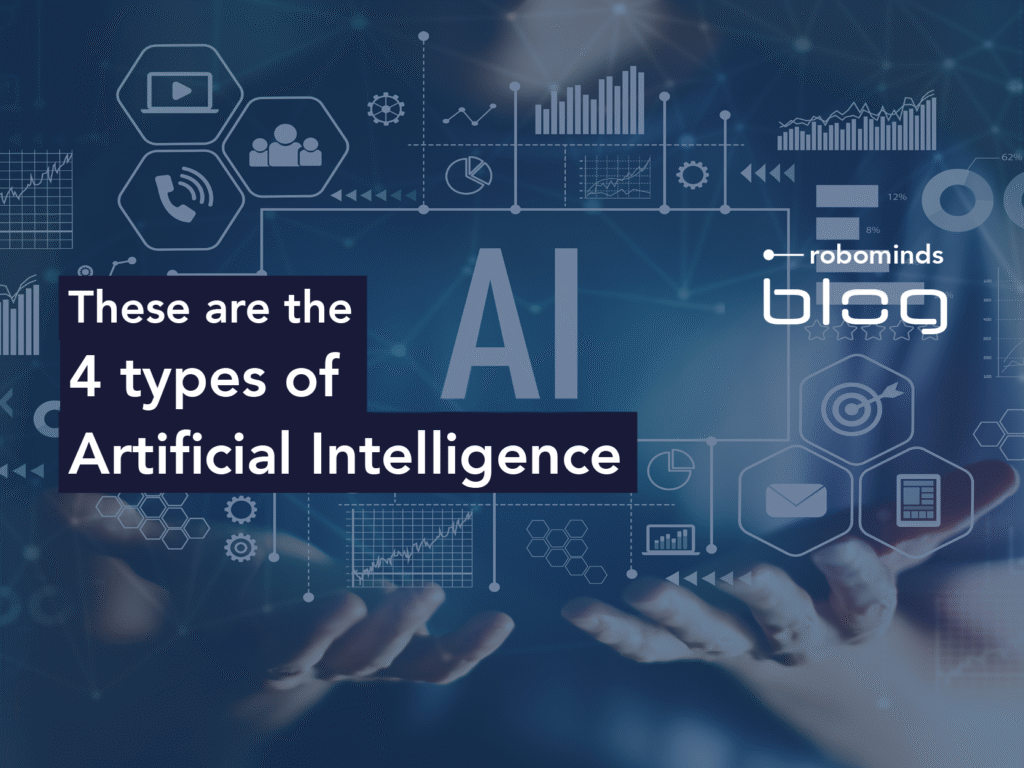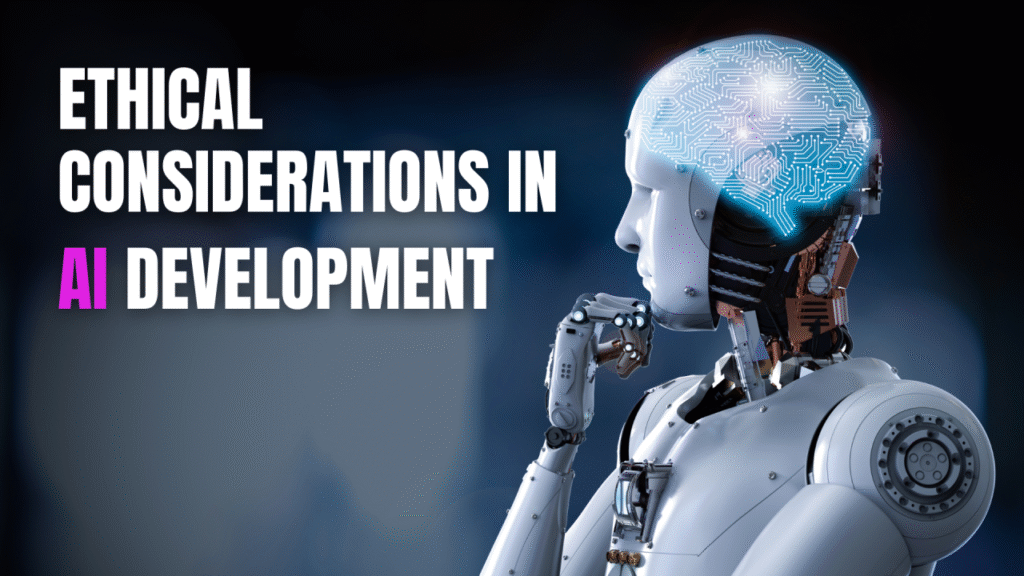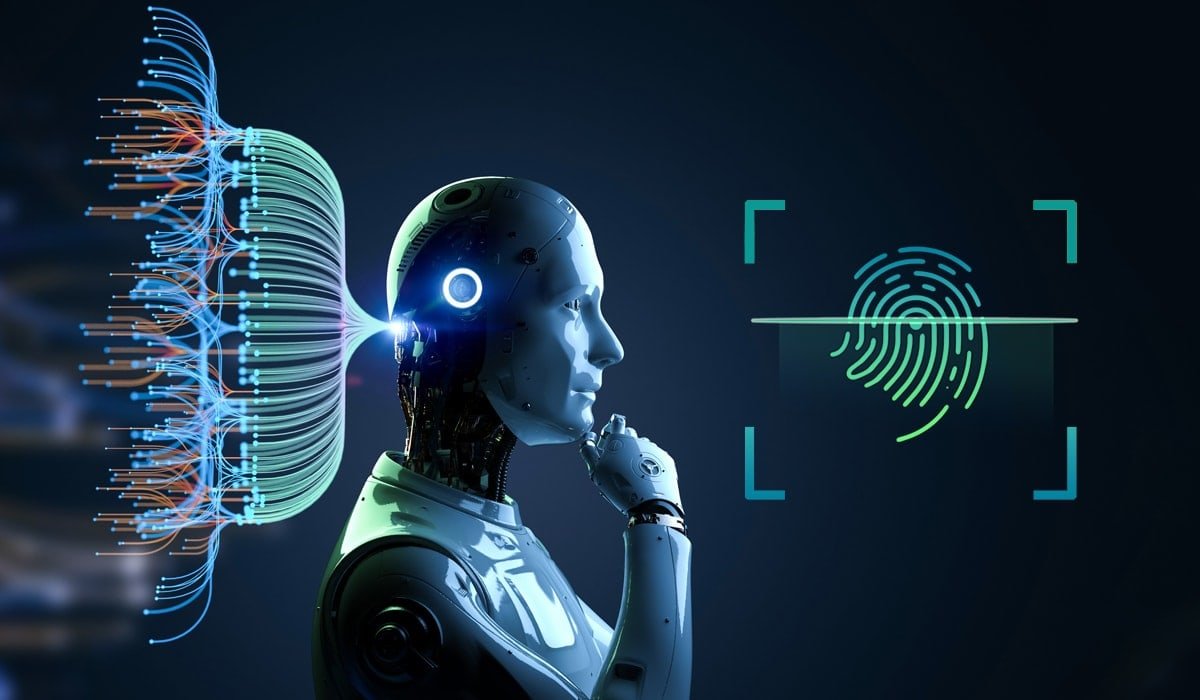Introduction to Artificial Intelligence
Artificial intelligence (AI) represents a groundbreaking advancement that is transforming various sectors in today’s world. At its core, AI refers to the simulation of human intelligence processes by machines, particularly computer systems. These processes include learning, reasoning, problem-solving, perception, and language understanding. Unlike traditional programming that is based on explicit instructions, AI utilizes algorithms and extensive datasets to recognize patterns, make decisions, and adapt to new inputs over time.
The significance of AI cannot be overstated. In several domains—such as healthcare, finance, transportation, and entertainment—we see how AI technologies improve efficiency and outcomes. For instance, AI-driven diagnostic tools can analyze medical data with precision, potentially identifying diseases earlier than human practitioners can. Similarly, in finance, AI algorithms assess risks and optimize trading strategies, enhancing the decision-making process for investors. This shift from human-centric to machine-assisted intelligence not only augments existing capabilities but also leads to the creation of entirely new solutions and services.
It is important to distinguish AI from human intelligence. While the latter is characterized by emotional depth, creativity, and social understanding, AI is largely computational and data-driven. AI systems may excel in executing tasks that require speed and accuracy, but they lack the innate human qualities that inform complex emotional interactions. Therefore, the integration of AI technology poses both opportunities and challenges, as it raises questions about ethics, employment, and the future of work.
As we delve deeper into the implications of artificial intelligence in various fields, it is crucial to maintain an understanding of both its capabilities and limitations. In this evolving landscape, the conversation around AI continues to grow, highlighting the importance of responsible development and usage of these powerful tools.
Types of Artificial Intelligence

Artificial intelligence (AI) is a multifaceted domain that can be categorized into three primary types: Narrow AI, General AI, and Superintelligent AI. Each of these categories represents different capabilities and levels of complexity in AI systems.
Narrow AI, also known as Weak AI, is designed to perform specific tasks with a high degree of efficiency. These systems do not possess the ability to think or reason beyond their programmed functions. Examples of Narrow AI can be found in various applications, such as virtual assistants like Siri and Alexa, recommendation systems used by Netflix and Amazon, and even sophisticated algorithms driving autonomous vehicles. Narrow AI is prevalent in modern technology and is responsible for many daily conveniences, showcasing its essential role in enhancing productivity and user experience in various sectors.
General AI, or Strong AI, refers to hypothetical systems that possess human-like cognitive abilities, allowing them to understand, learn, and apply knowledge across a wide range of tasks, similar to a human brain. While General AI remains largely theoretical at this point, researchers continue to explore its potential. Should it be realized, General AI could revolutionize industries, triggering profound changes in work, education, and daily living. The development of such systems would necessitate advanced capabilities to reason, reflect, and solve complex problems—attributes that current AI systems do not have.
Superintelligent AI represents an even higher level of intelligence, surpassing human cognitive abilities. This type of AI envisions machines that can outperform humans in virtually every intellectual task. Superintelligent AI remains speculative and raises ethical questions about control and alignment with human values. The exploration of this form of intelligence continues to be a topic of intense debate and concern among researchers.
In conclusion, while Narrow AI currently dominates the landscape, the pursuit of General and Superintelligent AI represents the frontier of technological advancement, presenting both enormous opportunities and formidable challenges to address in the future.
Key Technologies Behind Artificial Intelligence
Artificial Intelligence (AI) has rapidly evolved into a transformative force, driven by several key technologies. Among these, machine learning, deep learning, natural language processing (NLP), and neural networks stand out as critical components that significantly contribute to the advancement of AI capabilities.
Machine learning is a vital subset of AI, enabling systems to learn from data and improve their performance over time without being explicitly programmed. With algorithms that can analyze vast amounts of information, machine learning is fundamental in applications such as recommendation systems, where platforms suggest products or content based on user behavior. For instance, e-commerce websites utilize machine learning algorithms to personalize shopping experiences, enhancing customer satisfaction and engagement.
Deep learning, a more intricate form of machine learning, employs artificial neural networks to mimic human brain functions. This technology excels in processing unstructured data such as images, audio, and text. For example, deep learning powers image recognition systems used in social media platforms that automatically tag users in photos. This has revolutionized how we interact with visual content online.
Natural language processing (NLP) bridges the gap between human communication and computer understanding. It allows machines to interpret, generate, and respond to human language in a meaningful way. Virtual assistants, like Siri or Alexa, utilize NLP to understand voice commands and provide relevant responses, making interactions seamless and intuitive.
Lastly, neural networks, which underlie both machine learning and deep learning, consist of interconnected nodes that process information similarly to how neurons work in the human brain. These networks are essential in complex AI tasks, such as predicting stock market trends and automating driving in advanced autonomous vehicles. Each of these technologies plays a crucial role in expanding AI capabilities, showcasing how interdisciplinary advancements are paving the way for a smarter future.
Applications of Artificial Intelligence in Daily Life
Artificial Intelligence (AI) is increasingly becoming an integral part of daily life, affecting various sectors such as healthcare, finance, transportation, education, and entertainment. Each of these domains has witnessed significant improvements through the integration of AI technologies, enhancing efficiency and user experiences.
In healthcare, AI-powered systems aid in predictive analytics for patient diagnosis. For instance, tools like IBM Watson can analyze vast amounts of medical data, including patient records and clinical trials, to suggest personalized treatment options. Moreover, AI algorithms assist in early disease detection, which can lead to better patient outcomes. Robotic surgical systems, such as the da Vinci Surgical System, further demonstrate how AI improves precision in medical procedures.
In the financial sector, AI plays a crucial role in fraud detection and risk assessment. Financial institutions utilize machine learning algorithms to monitor transaction patterns and identify anomalies that may indicate fraudulent activity. Additionally, chatbots and virtual assistants have become commonplace in customer service, providing clients with immediate assistance and streamlining operations.
Transportation is another area where AI has made significant advancements. Self-driving cars, developed by companies like Tesla and Waymo, use advanced AI algorithms to navigate roads safely while optimizing traffic flow. AI systems in public transportation enhance route planning and scheduling, ultimately leading to reduced travel times and improved commuter satisfaction.
In education, AI tools personalize the learning experience by adapting content to the needs of individual students. Platforms like Knewton analyze students’ performance to provide customized resources, promoting better understanding and retention of material. Furthermore, AI tutors assist students outside traditional classroom settings, ensuring continuous learning support.
Lastly, AI has revolutionized the entertainment industry, affecting how content is created and consumed. Algorithms recommend movies and music based on user preferences on platforms such as Netflix and Spotify, resulting in a personalized user experience. Furthermore, AI is employed in content creation, allowing for the generation of unique stories and compositions.
Benefits of Artificial Intelligence
Artificial Intelligence (AI) has the potential to significantly enhance numerous aspects of both individual lives and organizational operations. One of the most notable benefits of AI is its capacity to increase productivity. By automating repetitive tasks, AI allows employees to focus on more strategic activities that require critical thinking and creativity. This shift not only enhances overall workplace efficiency but also fosters job satisfaction by enabling professionals to engage in more meaningful work.
Another advantage of incorporating AI into decision-making processes is the ability to analyze vast amounts of data quickly and accurately. AI systems utilize advanced algorithms, machine learning, and pattern recognition to identify trends and extract valuable insights that would be nearly impossible for humans to discern without significant time investment. This enhanced decision-making capability supports companies in crafting more informed strategies and optimizing resource allocation, leading to better performance and competitiveness in their respective markets.
Cost savings represent a pivotal benefit for businesses harnessing AI technologies. By streamlining operations, reducing errors, and minimizing the need for extensive human labor, organizations can realize substantial financial efficiencies. Moreover, AI-driven innovations often lead to the creation of new products and services, thus opening up additional revenue streams.
Moreover, AI can accurately tackle complex problems across various domains, including healthcare, finance, and logistics. With its ability to process and analyze data at a rapid pace, AI facilitates advancements that can improve quality of life, such as more precise medical diagnoses and optimized supply chain management.
Ultimately, the integration of AI in our daily lives and various industries fuels technological advancements that drive growth and efficiency. As AI continues to evolve, its promise to revolutionize our world becomes increasingly evident, heralding a future marked by innovation and excellence.
Challenges and Ethical Considerations

The rapid advancement of artificial intelligence (AI) has brought forth significant challenges and ethical considerations that must be addressed to ensure its responsible integration into society. One primary concern centers around job displacement; as AI systems are increasingly able to perform tasks traditionally held by human workers, there is a growing fear of widespread unemployment. Industries ranging from manufacturing to services may experience a shift, requiring workers to adapt to new roles that leverage human creativity and emotional intelligence—attributes that AI has yet to replicate effectively.
Data privacy presents another critical issue. As AI systems rely on vast amounts of data for training and operation, the collection and utilization of personal information can lead to significant privacy infringements. Individuals often find themselves unaware of how their data is being leveraged, raising questions about consent and the ethical handling of personal information. Ensuring transparency and protecting individuals’ rights to privacy is paramount as AI technologies evolve.
Algorithmic bias is perhaps one of the most insidious challenges posed by AI systems. If the data used to train these algorithms is biased, the outputs can perpetuate discrimination and inequality, leading to unjust consequences in areas such as hiring practices, law enforcement, and access to services. As a result, developers and organizations must prioritize fairness and strive to eliminate biases from data sets and algorithms. Furthermore, implementing robust calibration processes can aid in mitigating these risks.
Lastly, the necessity for stringent regulations cannot be overstated. As AI continues to develop at a rapid pace, legal frameworks must keep up to ensure that technology is deployed ethically and responsibly. Policymakers, technologists, and ethicists must collaborate to establish guidelines that not only address the current state of AI but also anticipate future challenges. Addressing these concerns collectively will be crucial to harnessing the full potential of AI while safeguarding societal welfare.
Future Trends in Artificial Intelligence
The landscape of artificial intelligence (AI) is continually evolving, with groundbreaking advancements forecasted to shape multiple sectors significantly. Notably, one of the most promising trends is the integration of AI technology with emerging technologies, notably blockchain. This synergy not only enhances data security but also facilitates transparent and efficient operations, paving the way for decentralized applications. As AI algorithms become more sophisticated, their ability to analyze vast amounts of data quickly and accurately will empower blockchain systems, driving innovation in finance, supply chain management, and beyond.
Another pivotal area of development lies in the application of AI to address pressing global issues. For instance, the healthcare sector stands to benefit immensely from AI technologies, particularly in personalized medicine and diagnostics. By utilizing machine learning and predictive analytics, AI can improve patient outcomes, streamline healthcare processes, and make healthcare more accessible. AI-driven models can analyze patterns in patient data to tailor treatments, thereby enhancing the efficacy of interventions and ensuring better management of chronic diseases.
Furthermore, AI is expected to play an instrumental role in combating climate change. Advanced algorithms can optimize energy consumption, improve resource management, and facilitate smarter agriculture practices, leading to sustainable development. By analyzing climate data, AI can help predict environmental trends, guiding policymakers in making informed decisions to mitigate the impacts of climate change.
In the coming years, we may also witness the rise of ethical AI frameworks, aimed at ensuring that AI technologies are used responsibly and transparently. As reliance on AI increases, addressing concerns related to bias, privacy, and accountability will be crucial for fostering public trust. Overall, the future of AI is poised to redefine multiple aspects of society, thrusting us into an era characterized by intelligence-driven solutions designed to enhance human capabilities and solve complex global challenges.
AI and Human Collaboration
The integration of artificial intelligence (AI) into various sectors has instigated a paradigm shift in how humans interact with technology. AI serves not as a replacement but as a collaborator that enhances human capabilities. This partnership allows for innovative solutions that would not be possible when either entity operates in isolation. For instance, in fields such as healthcare, AI systems analyze vast amounts of medical data more efficiently than a human could, aiding doctors in diagnosing illnesses and personalizing treatment plans. However, the final decision-making still relies on human expertise, ensuring that insights provided by AI align with ethical standards and patient welfare.
Moreover, maintaining human oversight in the development and deployment of AI systems is paramount. This oversight ensures that the algorithms uphold ethical considerations, prevent biases, and promote fairness. Human intervention is crucial not only in the initial stages of AI implementation but throughout the lifecycle of these technologies. By instilling a sense of accountability within AI systems, humans ensure that AI operates within the boundaries of ethical behavior. This collaborative relationship enhances the operational efficiency of industries while safeguarding the interests of society at large.
Furthermore, as AI continues to evolve, the need for human guidance in refining AI algorithms becomes increasingly essential. By harnessing human creativity and intuition, developers can create more adaptable AI systems that not only meet specific functional requirements but also resonate with societal values. This combination of technological advancement and human insight fosters an environment where innovation flourishes. The relationship between AI and humans is not merely transactional but a transformative alliance that holds great potential for the future, provided that we approach it with a shared commitment to ethical practices and responsible usage.
Conclusion and Call to Action
Artificial intelligence is rapidly becoming a pivotal force in reshaping industries and enhancing everyday life. Throughout this article, we have explored the multifaceted impact of AI, from its applications in healthcare and finance to its role in automating tasks and improving efficiencies across various sectors. The transformative potential of artificial intelligence cannot be overstated, as it holds the promise of revolutionizing how we think, interact, and operate in the modern world.
Understanding the fundamentals of artificial intelligence is essential for individuals and businesses alike, as these innovations are crucial for staying competitive in a fast-evolving landscape. We have highlighted key advancements in machine learning, natural language processing, and robotics, demonstrating how these technologies contribute to improvements in productivity and decision-making. As AI systems become increasingly sophisticated, their capabilities and implications will continue to expand, demanding an ongoing dialogue about their ethical use and societal impact.
As we conclude, we encourage our readers to remain informed about artificial intelligence developments. Staying updated on advancements in AI technologies will empower you to navigate the changes it brings and leverage its benefits. We invite you to explore our website, www.techthrilled.com, for further resources, insights, and discussions related to technology and artificial intelligence. Engaging with this evolving field will not only broaden your understanding but also inspire innovative ideas for applying AI in your personal and professional endeavors.
